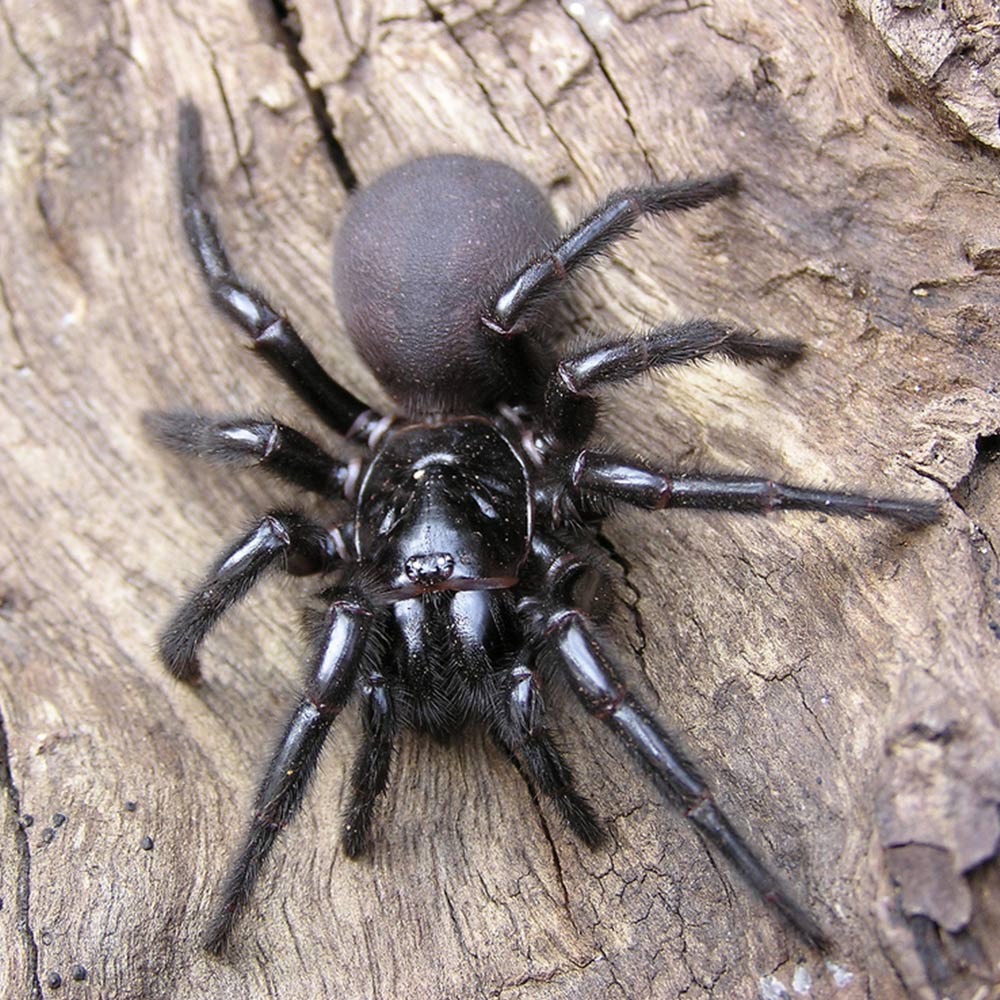Funnel Web Spider
Funnel Web Spider
> Back to Pest Library


Funnel Web Spider
Funnel-webs are large black spiders with a shiny head/thorax. The body may range from 1.5 cm up to more than 5 cm long depending on the species.
Female funnel-web spiders are stockier than males, with shorter legs and a bigger abdomen, which may be brown or bluish. The eyes are small and closely grouped, the fang bases extend horizontally from the front of the head and the long fangs lie parallel underneath (do not check this on a live spider!).
Funnel-web spiders live in burrows in sheltered positions in the ground, or in stumps, tree trunks or ferns above the ground. Their burrows are lined with a sock of opaque white silk and several strong strands of silk radiating from the entrance.
Funnel-web spider venom is highly toxic and all species should be considered potentially dangerous.
Distribution
Funnel-web spiders are found in:
- Queensland
- New South Wales
- Australian Capital Territory
- Victoria
- South Australia
- Tasmania
They mainly occur along the coast and mountain regions from Gladstone in the north to southern Tasmania.
Isolated species occur in the Mount Lofty Ranges and Eyre Peninsula of South Australia, and in the mountains of North Queensland. The Sydney funnel-web spider is found within about 100 km of the city.
In the tropics and subtropics, they favour rainforests and higher altitudes, but in southern states they also live in drier eucalypt forests and woodlands, as well as snow country.
Life History
Female funnel-web spiders are long-lived, possibly up to 20 years. They are rarely seen except during tree felling, excavation or landscaping work.
Female funnel-web spiders are sedentary and pass their entire lives inside the burrow, only venturing out momentarily to grab passing prey. Prey consists of insects and small vertebrates such as lizards and frogs.
Young spiders are raised inside the burrow. After the first couple of moults female funnel-web spiders leave the maternal burrow, dispersing on foot to build their own burrow.
Juvenile male spiders remain in the burrow until their final adult moult. Males mature at 2-3 years then vacate the burrow in search of a mate.
For more information
contact us today...
contact us today...
Phone:
02 4365 0596
Email:
Servicing Sydney, Central Coast
and Newcastle areas
Fully licensed and insured
Contact Us
Thank you for contacting us.
We will get back to you as soon as possible.
We will get back to you as soon as possible.
Oops, there was an error sending your message.
Please try again later.
Please try again later.
Talk to your
local experts
in Pest Control and Inspection Services
Talk to your
local experts
in Pest Control and Inspection Services
Our innovative pest control service is guaranteed to rid your premises of your insect problems, while our protection services make sure your property is always protected.
QUICK CONTACT
Thank you for contacting us.
We will get back to you as soon as possible.
We will get back to you as soon as possible.
Oops, there was an error sending your message.
Please try again later.
Please try again later.
CONTACT INFO
Address:
PO Box 3599, Erina NSW 2250
Phone:
Email:
Fully licensed and insured
